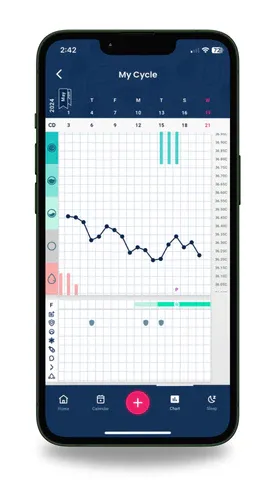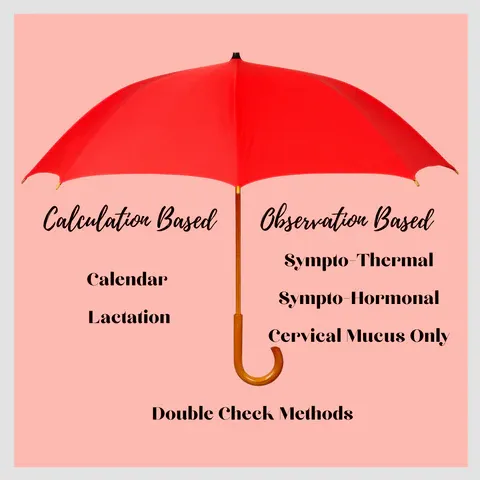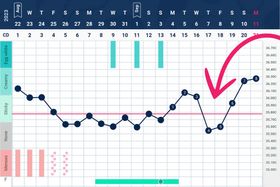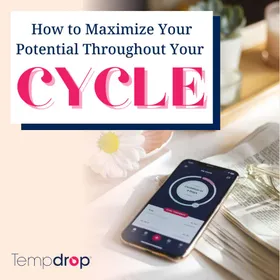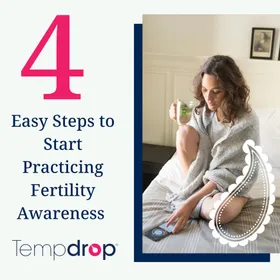Discover the Right Fertility Awareness Based Method for You
Published February 5, 2025.
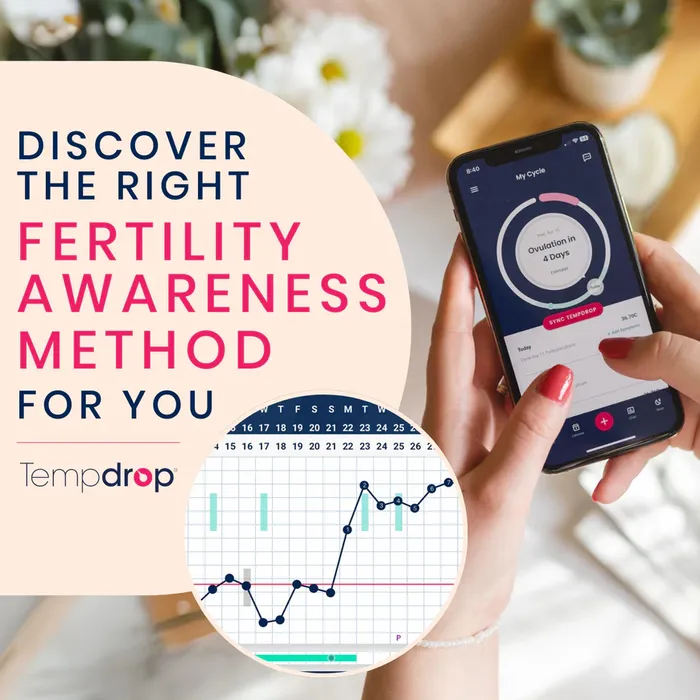
The terms Fertility Awareness, Fertility Awareness Method (FAM), and Fertility Awareness Based Method (FABM) can be confusing for many reasons:
- It’s often a term not used or openly discussed
- It’s used to encompass/describe various fertility awareness-based practices (FABMs)
- It’s commonly associated with religious birth control methods
- It’s confused with the rhythm method
- It’s assumed only women wanting to get pregnant use it
I want to take a little time to clear some things up. FABM (fertility awareness-based methods) is a broad, umbrella term encompassing various fertility awareness methods. I find it helpful to classify the various methods of FABM into 5 types:
I want to take a little time to clear some things up. FABM (fertility awareness-based methods) is a broad, umbrella term encompassing various fertility awareness methods. I find it helpful to classify the various methods of FABM into 5 types:
- Calendar
- Lactation
- Sympto-thermal
- Sympto-hormonal
- Cervical Mucus Only
It’s important to understand the differences in the various methods because many methods have a bad reputation, particularly when it comes to efficacy for birth control. Understanding the differences will allow you to better understand why certain methods might be more effective than others, and it may help you determine which method would be the best fit for you.
So let’s jump in!
All FABMs work by helping women become aware of when they are fertile and
infertile. You are not fertile every day! In fact, women are only fertile 6-7 days per cycle. FABMs are based in this fertile/infertile principle, and the more effective forms typically involve daily observation and charting of your body’s biomarkers including
- Basal body temperature (BBT)
- Cervical mucus or cervical fluid (CM/CF)
- Urinary hormones (LH testing)
- Cervix positioning (CP)
Women can use these biomarkers to help them more accurately identify their fertile and infertile windows in order to avoid/achieve pregnancy; better understand hormonal, cervical, vaginal, and overall health; and live cyclically with their bodies and hormonal fluctuations.
Since you now understand the principles let’s get deeper into terminology. I like to start with the broader umbrella terms and then get more granular.
FABM Umbrella
Again, FABM is the broad umbrella term used to encompass various fertility awareness-based methods. FABMs are sometimes called Natural Family Planning (NFP), though this term is often used in a religious setting where abstinence is enforced during the fertile window.
When considering efficacy (achieving your goal), I find it most helpful to break the 5 main types into two groups.
- Calculation-based methods
- Observation-based methods
Calculation-Based Methods
These are generally less effective because they are based on, you guessed it, a calculation*. This calculation may be on the woman’s past cycles or population averages. Either way, it will not be incredibly accurate because it is not based on the current woman’s individual cycle, hormonal fluctuations, and observations. When we rely on aggregated data rather than our individual bodies, we often don’t get the result we intended. Examples of Calculation-Based Methods include Calendar (such as the Rhythm Method) and Lactation methods.
* Lactational amenorrhea would be the exception, as it has fairly good rates when understood and properly followed.
Observation-Based Methods
These methods are based on listening and paying attention to your body on a daily basis rather than relying on a prediction. Because of this, these methods will be more effective for natural birth control (contraception) as well as when you are trying to get pregnant (conceive). They allow women to make a conscious daily observation to determine whether or not she is fertile and make a decision about her choices based on this. Examples of Observation-Based Methods include Sympto-Thermal, Sympto-Hormonal, and Cervical Mucus Only Methods.
Observation and Calculation
These two methods can also be combined which typically will add safety of a method if it is being used for natural birth control. For example, a double-check sympto-thermal method adds a calculation from a woman’s previous cycles to increase effectiveness of the method. Another example would be a woman using LAM (lactational amenorrhea) in combination with the sympto-thermal method.
FABMs: How to use them and what are some examples?
Since you understand what is likely to make certain methods more effective than others, let’s break down the 5 types of FABM:
- Calendar
- Lactation
- Sympto-thermal (double-check and single-check methods)
- Sympto-hormonal
- Cervical Mucus only
So what do these FABMs involve & what are some examples?
Calendar: Predicts the fertile period by using calculations from previous cycles or population averages. *NOT recommended for natural birth control because of high failure rates!
Examples: Rhythm method, Standard Days method, Cycle Bead, most cellphone apps/trackers
Lactation: Fertile window based on suppression of ovulation occuring when women are exclusively breastfeeding, have not had a return of period, and are less than 6 months postpartum.
Examples: Lactational amenorrhea
Sympto-thermal: Identifies the fertile window based on basal body temperature and cervical mucus observations, plus optional cervix checks.
- Single-check method: includes the above observations
- Double-check method: adds a calculation based on the individual woman’s past cycles to the beginning of her cycle to increase safety/efficacy when the method is being used for contraception (birth control). Double-check methods are more effective than single-check methods.
Examples: Serena, SymptoPro, Sensiplan, NFPTA, Couple to Couple League, Taking Charge of Your Fertility, Justisse
Sympto-Hormonal: Identifies the fertile window based on cervical mucus and urinary hormone observations (usually with Clearblue fertility monitor or LH strips/OPKs)
Examples: Marquette, FEMM
Cervical Mucus/Cervical Fluid Only: Identifies the beginning & end of the fertile window based on cervical mucus observations.
Examples: Billings, Creighton, Two-Day method
Does it matter which method I use?
The best method is the one working the best for you and your partner, if you desire to include them in the process (which I do recommend, if you’re open to it).
Things to consider when choosing a method:
- Efficacy rates
- If you want to use fertility awareness to avoid pregnancy, I highly recommend choosing a method with high efficacy rates, such as the double-check sympto-thermal method, and learning with an instructor for at least the first 3 cycles. This ensures you thoroughly understand the method and have support throughout the process
- It’s common to hear about the 99.6% effectiveness rate of FABMS, but as you now know, not all FABMs are created equal! This high efficacy rating is based on a study of the Sensiplan Method (a Double-Check Sympto-thermal Method) where users studied with an instructor. Make sure the you are clear on the efficacy of what you are choosing if this matters to you. I’ve included a few resources at the bottom to help.
- Your learning style
- Do you prefer online or in-person learning?
- Do you do do better in a group setting or with one-on-one work?
- Do you prefer largely self-study work or do you do better with accountability and more consistent access to ask questions
- Secular vs Religious teachings.
- Most methods are offered in various settings. Choose a class/instruction respectful of your beliefs and needs.
- Your stage of life and lifestyle and health issues
- Different methods might be more fitting for different health issues, lifestyles, or stages of life. If you are unsure what method to choose or if you are wanting to learn a certain method but want to better understand if it is a good fit for you, discussing your situation with an educator (or a few educators) before you choose a method can be extremely helpful.
- Examples of how your unique circumstance might affect your method choice:
- Women who are postpartum or those with confusing cervical mucus patterns might benefit from Symptohormonal methods while women with PCOS may want to avoid these methods.
- Those with insomnia or erratic schedules (night shift workers, postpartum moms) might have more challenges using the Symptothermal method - though Tempdrop, a wearable basal body thermometer, is a wonderful resource for this! I have struggled intermittently with insomnia but wanted to use the symptothermal double-check method because it has the highest efficacy rating - Tempdrop has made this journey so much easier.
What do I teach & why?
I teach a Double-Check Sympto-Thermal Method because I wanted a highly-effective method for myself and other women, based on scientific studies. I’ve also incorporate LH testing for certain women when I think this would benefit their current life stage or health issues. For example, I often suggest them for some of my postpartum mamas or those who are trying to conceive.
All of my work with private clients is based on their learning style, goals, preferences, unique body, and health status. You don’t fit a mold, so why should your FAM education?
I hope this information was valuable! Please reach out if you have questions or if you are interested in working with me to learn FAM.
Below are some resources to help you better understand the effectiveness of the various Fertility Awareness-Based Methods:
Lactational amenorrhoea method for family planning, 2015
Natural Family Planning, 2012
Fertility Awareness-Based Methods: Another Option for Family Planning, 2009
